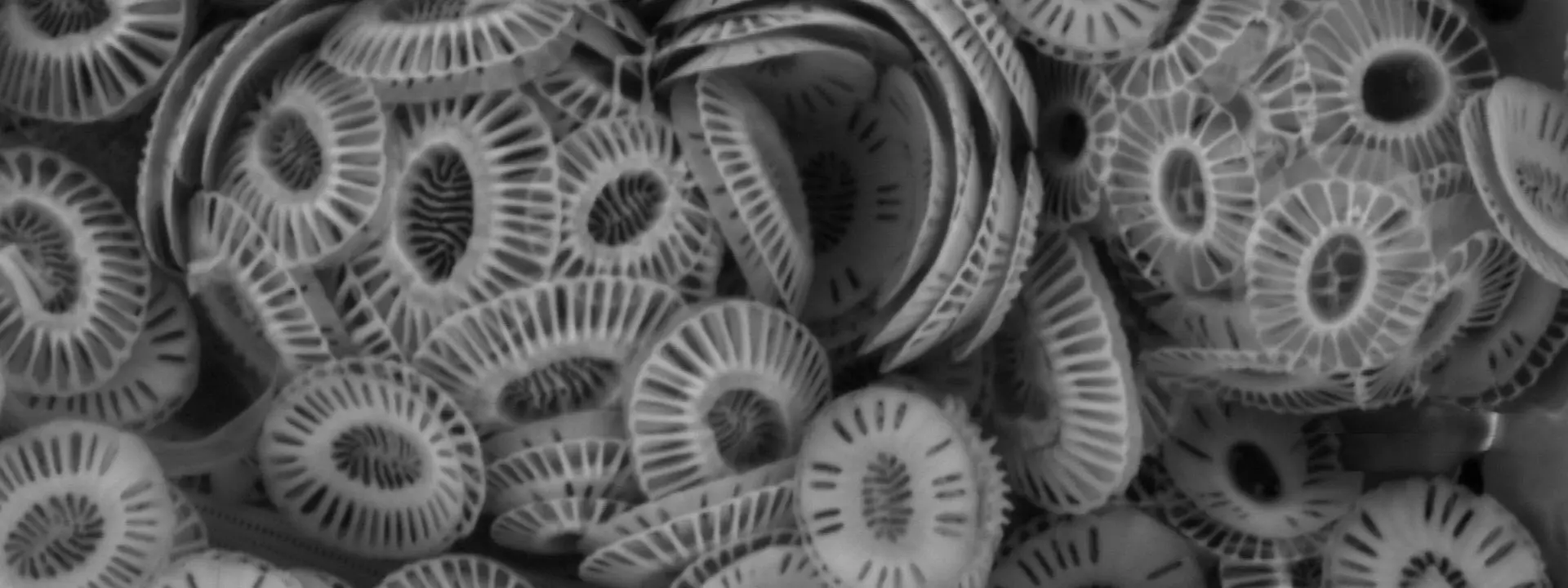Tiny architects, Titanic climate impact: scientists call for international coccolithophore day

Microscopic plankton that regulate Earth’s climate and sustain ocean ecosystems take centre stage in a new awareness campaign.
Smaller than a speck of dust and shaped like tiny discs, coccolithophores are microscopic ocean organisms with a big climate job. They draw carbon out of seawater, help produce oxygen, and their calcite plates sink to form chalk and limestone that preserve Earth’s climate history. Today, scientists from the five European research organisations have launched an initiative to make 10 October International Coccolithophore Day, highlighting their crucial role in regulating the planet’s carbon balance, producing oxygen, and sustaining the ocean ecosystems that underpin all life.
The campaign is led by the Ruđer Bošković Institute (Zagreb, Croatia), The Lyell Centre at Heriot-Watt University (Edinburgh, UK), NORCE Norwegian Research Centre (Bergen, Norway), Marine and Environmental Sciences Centre (MARE), University of Lisbon (Portugal), and the International Nannoplankton Association (INA).
A delicate balance under threat
Most people have never heard of coccolithophores, yet without them, Earth’s climate and oceans would be profoundly different. These single-celled, chlorophyll-containing organisms drift in the sunlit surface waters, adorned with calcium carbonate plates called coccoliths.
Despite their microscopic size, coccolithophores are among the planet’s most powerful carbon processors. Each year, they produce more than 1.5 billion tonnes of calcium carbonate, removing carbon dioxide from the atmosphere and helping to store carbon in deep-sea sediments. They also produce oxygen, support marine food webs, and influence global climate by helping to regulate our planet's greenhouse effect.
Coccolithophores thrive and often dominate vast areas of the ocean. But climate change is altering water temperature, pH chemistry, and nutrient flows, threatening their survival and the ecosystems they support.
Why coccolithophore?
Coccolithophores are unique among plankton due to both their role in regulating the global carbon cycle and the ability to track their long-term impact. “Unlike other groups, they build intricate calcium carbonate plates that not only help draw down carbon dioxide from the atmosphere, but also transport it into deep ocean sediments, where it can be locked away for millennia. This biomineralisation leaves behind an exceptional geological record, allowing us to study how they’ve responded to past climate shifts and better predict their future role. In short, their dual role as carbon pumps and climate archives makes them irreplaceable in understanding and tackling climate change,” says Professor Alex Poulton of the Lyell Centre.
“They are the ocean’s invisible architects, crafting the tiny plates that become vast archives of Earth’s climate,” says Dr Jelena Godrijan, a leading coccolithophore researcher at the Ruđer Bošković Institute. “By studying their past and current responses to changes in the ocean, we can better understand how marine ecosystems function and explore how natural processes might help us tackle climate change.''
Cutting-edge science: from plankton to planetary processes
The launch of International Coccolithophore Day spotlights the tiny ocean plankton that quietly help regulate atmospheric carbon dioxide.
At the Lyell Centre in Scotland, the OceanCANDY team, led by Prof. Alex Poulton, studies how these plankton pull CO₂ from the air and store it in the sea, and tests how warmer, more acidic oceans could alter this process. Computer forecasts compare which species do this job best, today and tomorrow.
In Norway, scientists at NORCE Research, led by Dr Kyle Mayers and his team, track coccolithophore life stories, how they grow, who eats them, and the viruses that infect and ultimately kill them, to show how carbon moves through the ocean. Ancient DNA in seafloor mud adds a long view of past climate shifts. “Coccolithophore interactions with viruses and grazers matter,” says Dr Kyle Mayers of NORCE. “These links shape food webs and how the ocean stores carbon.”
In Croatia, the Cocco team at the Ruđer Bošković Institute study how they shape the ocean’s carbon cycle, from the decay of organic matter to bacterial interactions that influence seawater chemistry and CO₂ uptake. “In understanding coccolithophores, we’re really uncovering the living engine of the ocean’s carbon balance,” says Dr Jelena Godrijan “Their interactions with bacteria determine how carbon moves and transforms—processes that connect the microscopic scale of plankton to the stability of our planet’s climate.”
At MARE, University of Lisbon, Dr Catarina V. Guerreiro leads studies to trace how aerosol-driven fertilisation shapes the distribution of coccolithophores across the Atlantic into the Southern Ocean, and what that means for the ocean’s carbon pumps today and in recent times. Her approach consists of combining aerosol and seawater samples with sediment records, satellite data and lab microcosms to pin down cause and effect. “We’re connecting tiny chalky organisms to planetary carbon flows,” says Dr Guerreiro.
At INA, scientists connect living coccolithophores to their fossil record, using their microscopic plates to date rocks and trace Earth’s climate history. By refining global biostratigraphic frameworks and calibrating species’ evolutionary timelines, INA researchers transform fossils of coccolithophores into precise tools for reconstructing ancient oceans, linking modern plankton ecology with the geological record of climate change.
Why coccolithophore day matters?
Designating a day for Coccolithophores may seem like a small gesture, but its advocates argue it could have a big impact. “This could contribute to changing the way we see the ocean. “We most often talk about whales, coral reefs, and ice caps, but coccolithophores are a vital part of the planet’s climate system. They remind us that the smallest organisms can have the biggest impact, and that microscopic life plays a crucial role in shaping our planet’s future,’’ says Dr Sarah Cryer from the CHALKY project and OceanCANDY team.
The campaign to establish October 10 as International Coccolithophore Day is a call to action. By highlighting the profound, yet often overlooked, role of coccolithophores, scientists want to inspire a new wave of ocean literacy, policy focus, and public engagement.